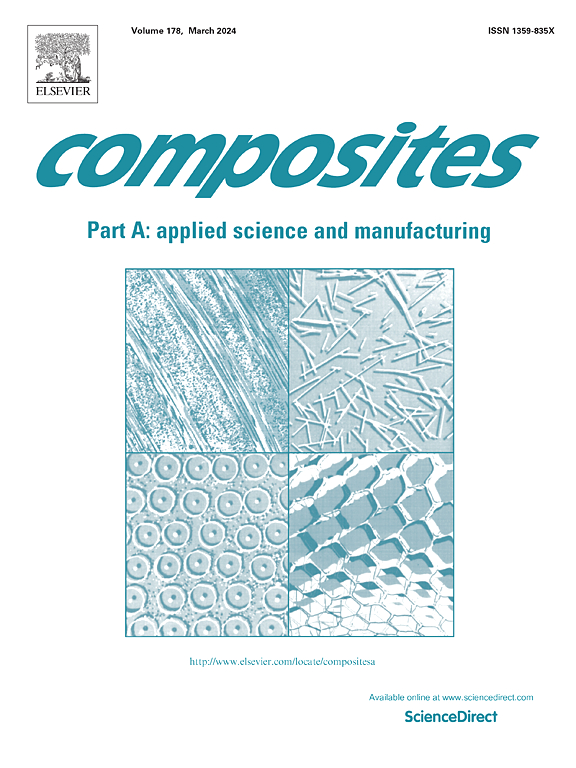Continuum damage modeling of unidirectional 3D-printed composites under longitudinal tension
IF 8.1
2区 材料科学
Q1 ENGINEERING, MANUFACTURING
Composites Part A: Applied Science and Manufacturing
Pub Date : 2025-03-19
DOI:10.1016/j.compositesa.2025.108850
引用次数: 0
Abstract
This work presents a two-scale modeling approach for simulating the progressive damage behavior of unidirectional 3D-printed composites reinforced with continuous fibers. The approach utilizes a semi-analytical method, combining analytical homogenization at the micro-scale and finite element modeling at the macro-scale. At the micro-scale, the analytical model incorporates weakest link theory and Weibull statistics to account for fiber damage. At the macro-scale, a novel method based on continuum damage mechanics (CDM) is developed to consider damage evolution. The two-scale modeling approach is compared to experimental results of tensile and open-hole tests of 3D-printed composites reinforced with continuous carbon fibers. The comparison demonstrates that the two-scale modeling approach captures well the complex mechanical behavior of unidirectional 3D-printed composites.
求助全文
约1分钟内获得全文
求助全文
来源期刊

Composites Part A: Applied Science and Manufacturing
工程技术-材料科学:复合
CiteScore
15.20
自引率
5.70%
发文量
492
审稿时长
30 days
期刊介绍:
Composites Part A: Applied Science and Manufacturing is a comprehensive journal that publishes original research papers, review articles, case studies, short communications, and letters covering various aspects of composite materials science and technology. This includes fibrous and particulate reinforcements in polymeric, metallic, and ceramic matrices, as well as 'natural' composites like wood and biological materials. The journal addresses topics such as properties, design, and manufacture of reinforcing fibers and particles, novel architectures and concepts, multifunctional composites, advancements in fabrication and processing, manufacturing science, process modeling, experimental mechanics, microstructural characterization, interfaces, prediction and measurement of mechanical, physical, and chemical behavior, and performance in service. Additionally, articles on economic and commercial aspects, design, and case studies are welcomed. All submissions undergo rigorous peer review to ensure they contribute significantly and innovatively, maintaining high standards for content and presentation. The editorial team aims to expedite the review process for prompt publication.
 求助内容:
求助内容: 应助结果提醒方式:
应助结果提醒方式:


